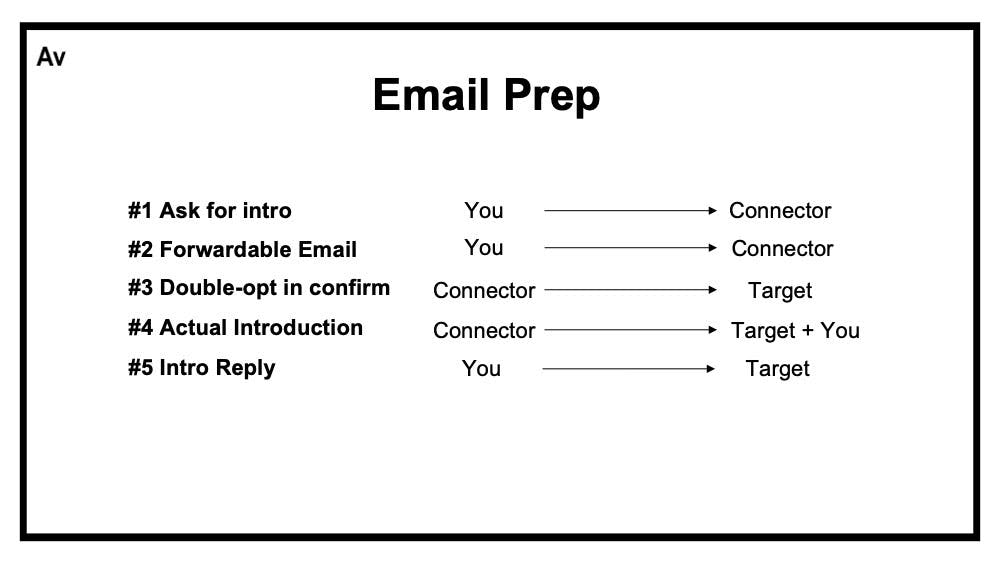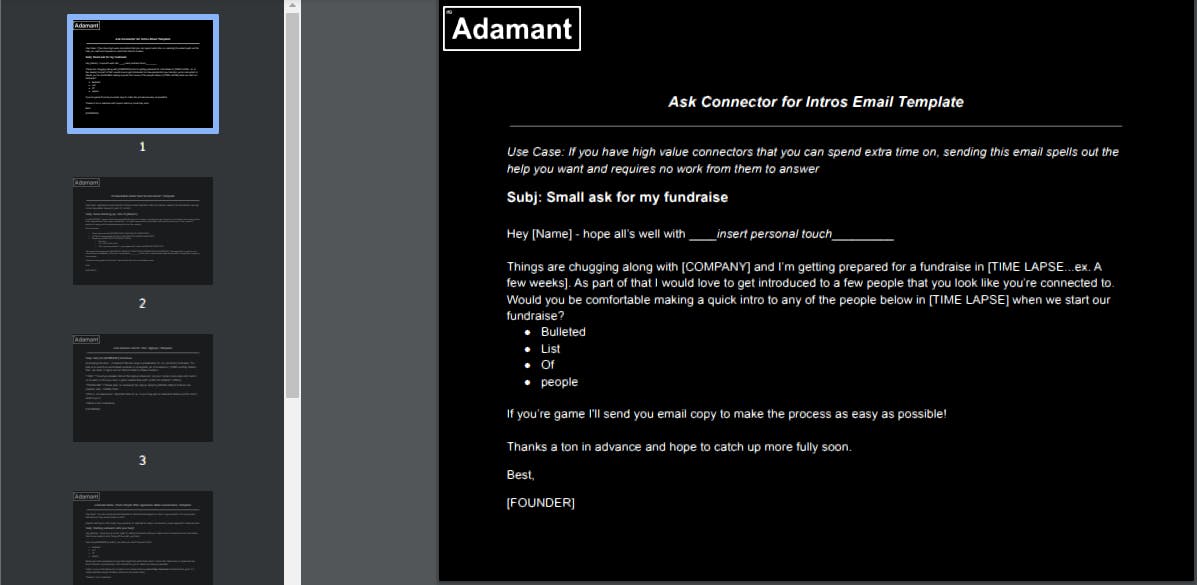Jason Yeh is an ex-VC & the founder of Adamant, a group focused on making fundraising easier. Founders ❤️ binging his Fundraising Fieldnotes newsletter and podcast Funded before raising capital. Find Jason on Twitter: @jayyeh.
This article was originally published on on Adamant
I often talk about introductions being the lifeblood of a great fundraise. They’re the source of your greatest leads. Getting as many high-quality introductions as possible is an important goal during fundraising, but a lot of you are terrible at it.
If you’re not getting 80% of your intro requests converting, you’re likely part of this group of terrible intro requesters.
Don’t be too embarrassed- it’s super common and not too hard to fix. Before getting into the how... let’s talk about the why.
Introductions are way more complicated than they appear. Founders be like “Jason knows this person. Should be a breeze for him to just shoot an email over and connect us!... and he also knows these 50 other people I want to talk to. Jackpot🍯”
An intro is SO much more than an email…

If you’ve been in a role like business development or sales where this dynamic existed, that illustration might make some sense to you. That said, the complexity of intros in early-stage investing is at another level. Because of that, there’s so much consideration and overhead that goes into introductions. My observation is that most people’s failed intro requests happen when they aren’t aware of this reality.
Being more successful about requesting intros is all about making it easier, introducing mutual benefits, and organizing the process.
1. Making it easier.
Even a “forwardable email” does not fully eliminate the effort that an intro requires. Consider this outline of the 5 emails that are needed to properly execute a great intro:

2. Mutual Benefits
Even your closest friends are busy people. Especially if they’re the type of people who have valuable relationships, they likely spend a lot of time making introductions and have to be mindful of when and how they send them. Mutual benefits help make it an easier decision for your connectors to prioritize your introductions. Mutual benefits can be different for different people but there’s one consistent element that you should always strive for: Make your intro one they are excited to make, an intro that will be considered doing a favor vs. asking for a favor. Then the intro becomes mutually beneficial.
3. Organizing it for them
Intros will be outside the normal workflow of people you ask. You’ll be requesting something they don’t normally allocate time for. Not only that, but part of the overhead of doing the intro will be deciding when to do it. They’ll think to themselves “Oh I really want to help. I’ll do it as soon as I can”. That amorphous “as soon as I can” can also easily be “never”. To help you’ll want to do two things. First, give them a deadline. Second, follow up. Boom.
To summarize, the introduction is an incredibly intricate thing. Once you help alleviate the cognitive load for a connector, you will get way more and higher quality introductions. Good luck.
BTW
If you want to level up your intro request outreach, here's a collection of email templates you can use as a starting point.


